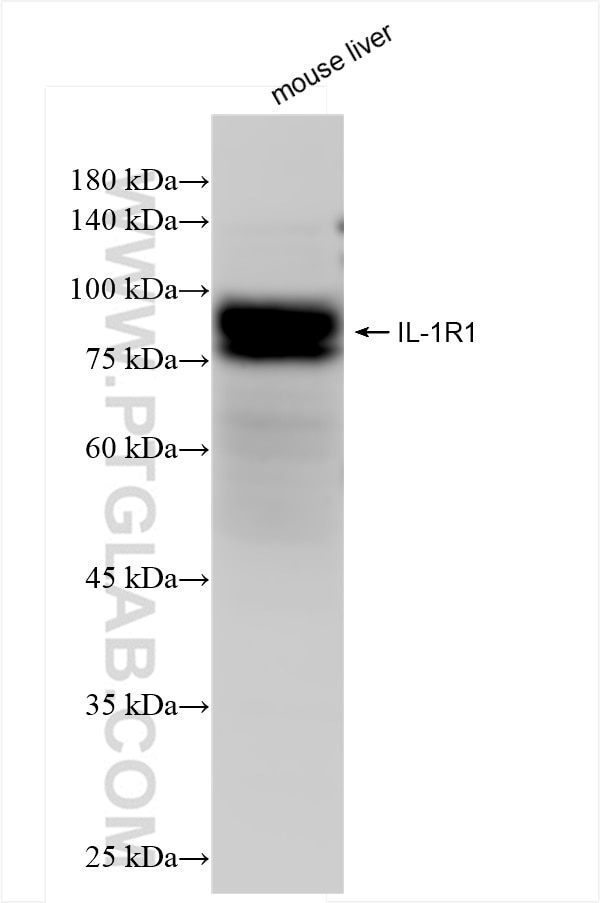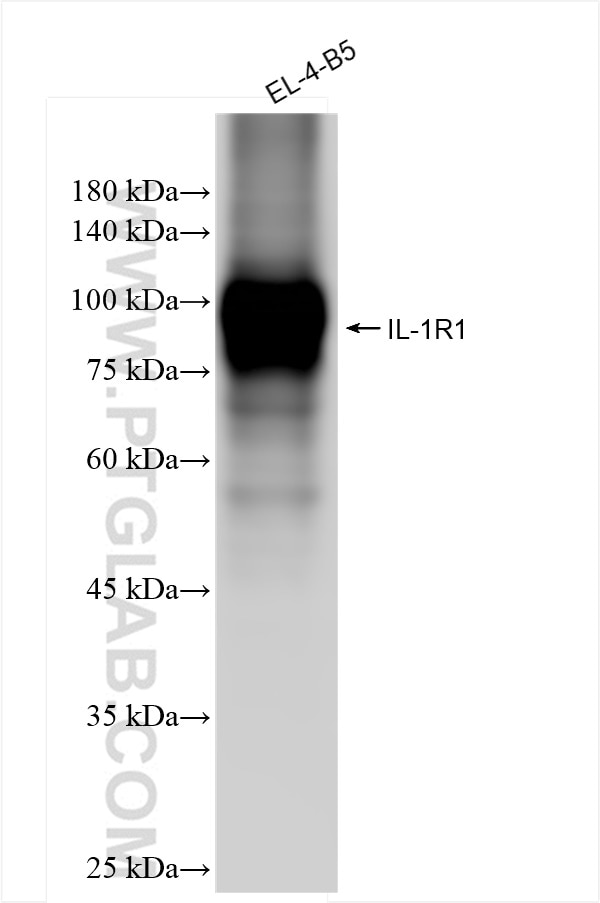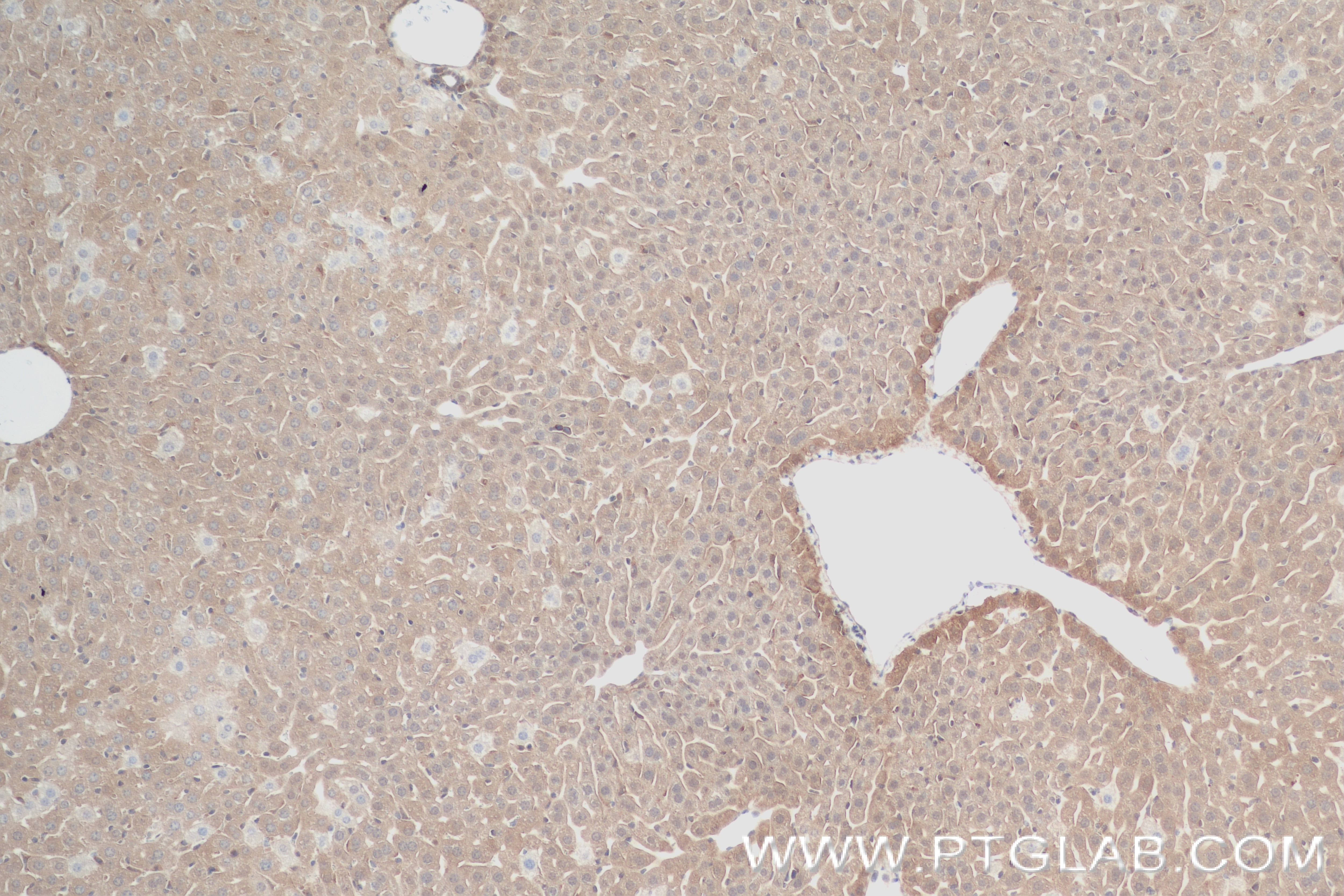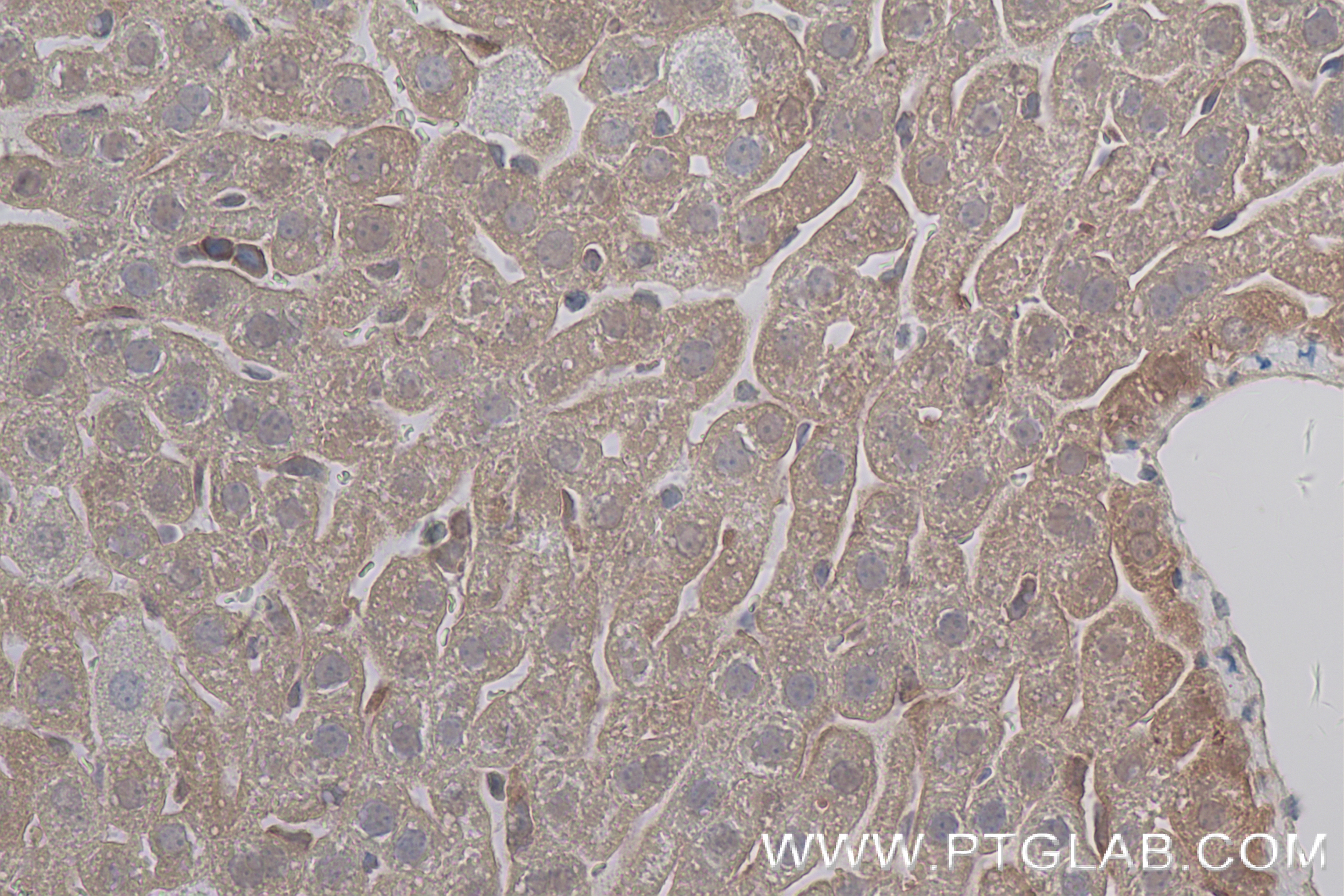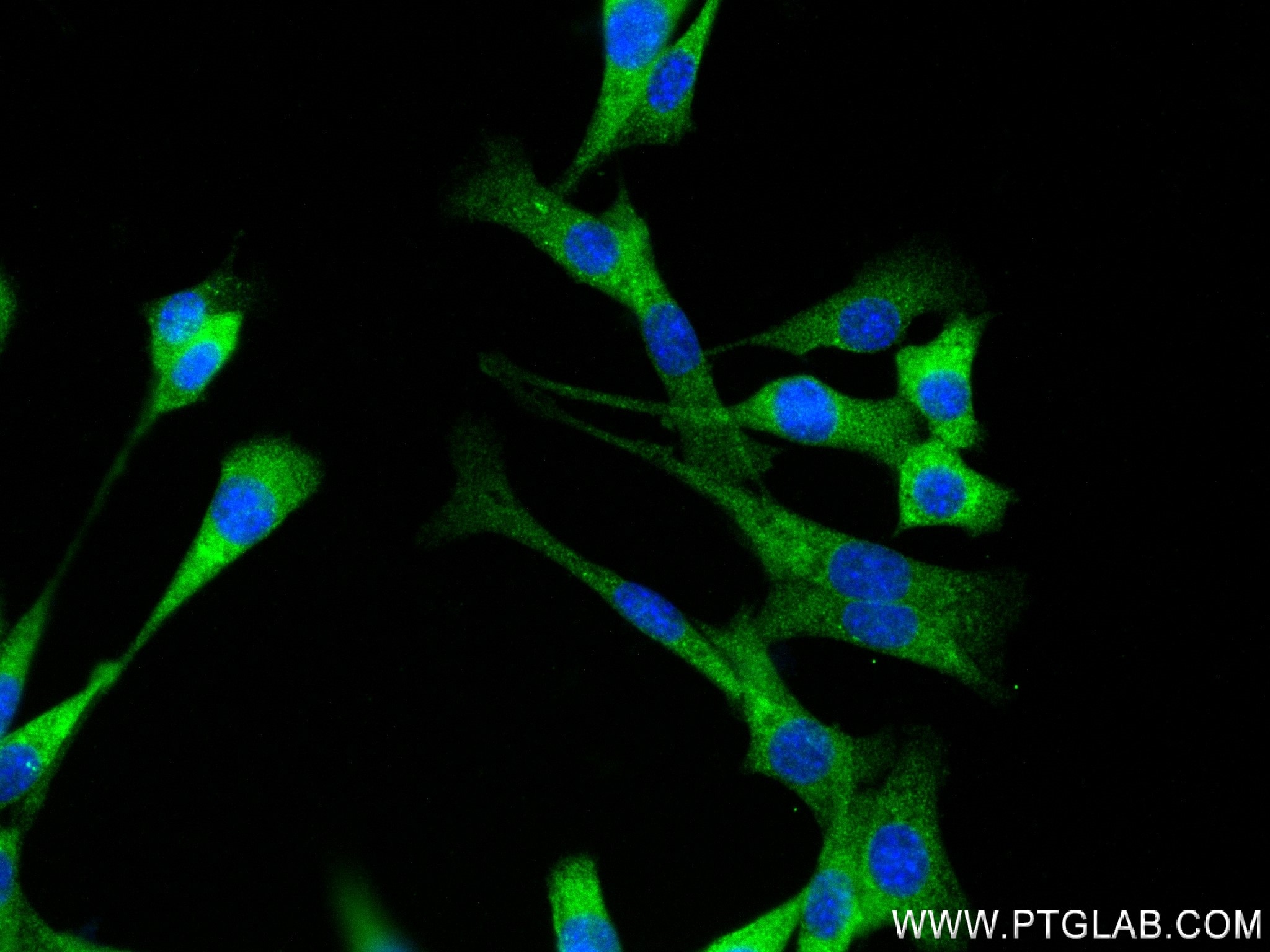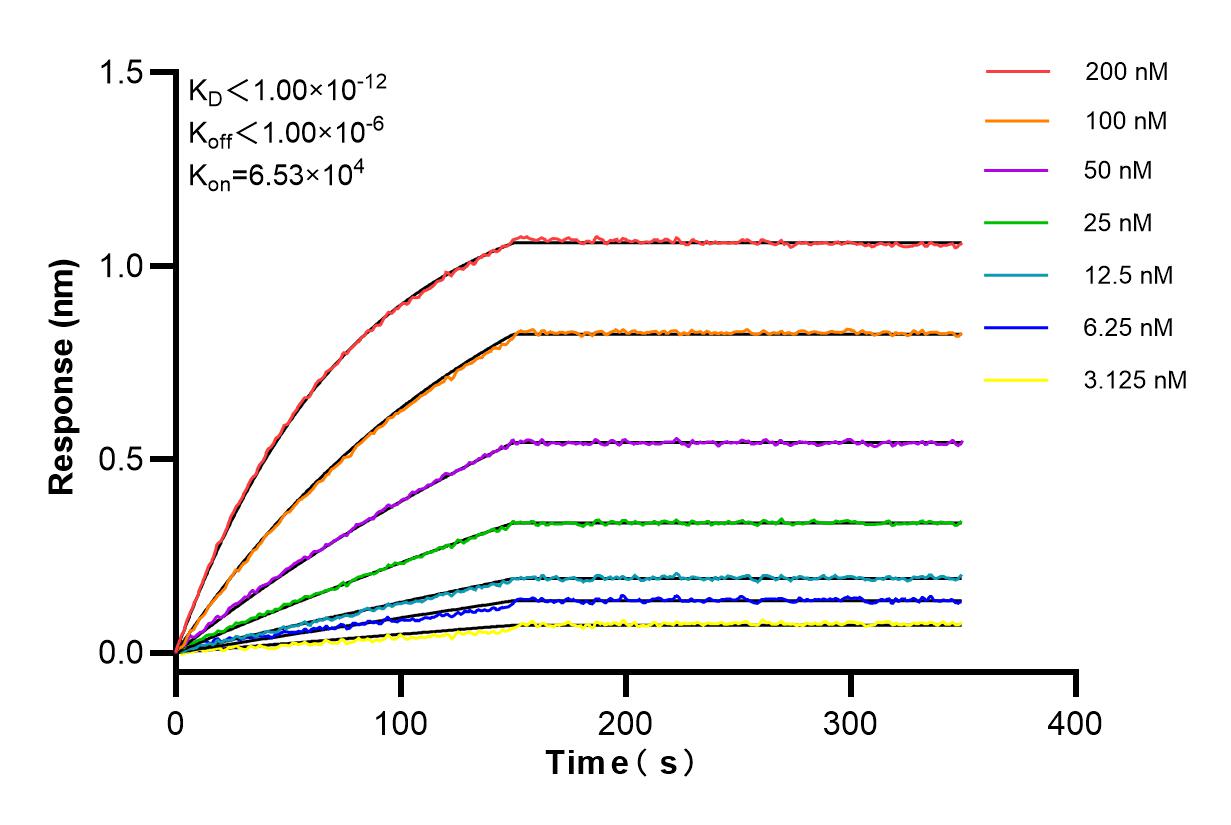Product Information
84094-6-PBS targets IL-1R1 in WB, IHC, IF/ICC, Indirect ELISA applications and shows reactivity with mouse samples.
| Tested Reactivity | mouse |
| Host / Isotype | Rabbit / IgG |
| Class | Recombinant |
| Type | Antibody |
| Immunogen | Fusion Protein Predict reactive species |
| Full Name | interleukin 1 receptor, type I |
| Calculated Molecular Weight | 67 kDa |
| Observed Molecular Weight | 75-100 kDa |
| GenBank Accession Number | NM_008362.2 |
| Gene Symbol | Il1r1 |
| Gene ID (NCBI) | 16177 |
| Conjugate | Unconjugated |
| Form | Liquid |
| Purification Method | Protein A purfication |
| UNIPROT ID | P13504-1 |
| Storage Buffer | PBS only , pH 7.3 |
| Storage Conditions | Store at -80°C. |
Background Information
IL-1R1 (IL-1 receptor type 1, also known as p80, IL-1R-alpha or CD121a) is a 80 kDa transmembrane glycoprotein and a member of the interleukin-1 receptor family (PMID: 35163653; 29248002). It is a receptor for IL-1α, IL-1β, and interleukin-1 receptor antagonist (IL-1Ra). IL-1α and IL-1β interact with the extracellular domain of IL-1R1, triggering the recruitment of an accessory receptor, the IL-1RAcP, resulting in a functional receptor complex that initiates IL-1R1 signaling cascades (PMID: 35163653). IL-1Ra competes with active IL-1 and blocks binding to their common activating receptor IL-1R1 and, thus, inhibits IL-1 signaling (PMID: 35332327; 11641511). It has been reported that IL-1R1 may also bind IL-38 (PMID: 29248002). IL-1R1 expression has been found in many cell types including T cells, macrophages, neutrophils, eosinophils, basophils, mast cells, fibroblasts, and endothelial cells. IL-1R1 can be released from the cell surface following proteolytic cleavage, generating a soluble form of 55-60 kDa (PMID: 17324958).
